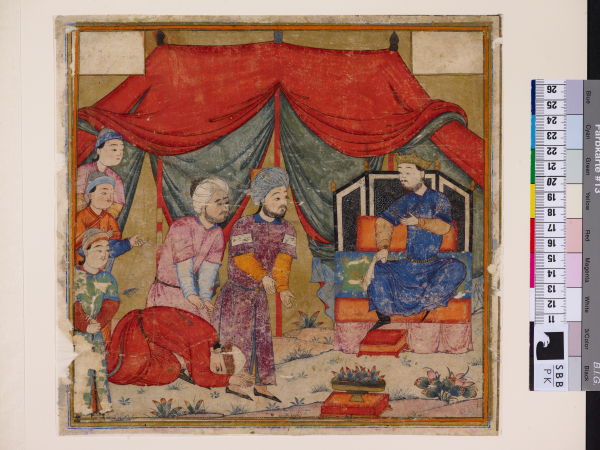
Tell us a bit about your book
My book is about the situation in Syria before, during and after the first crusaders arrived in the near east. The crusader armies arrived in Syria in 1097 and immediately began interacting with various different religious and ethnic groups who lived in the eastern Mediterranean at this time.
Most research on the crusades is premised upon the assumption that the crusaders had a hugely significant impact on this region. This book tries to test this premise by first sketching out the political dynamics in Syria prior to the first crusade, and then looking to assess what had changed in the aftermath of this momentous historical event.
What inspired you to research this area?
To be honest, I wanted to work on this subject since my Bachelor studies at the University of Aberystwyth when I read Carole Hillenbrand’s book, The Crusades: Islamic Perspectives (Edinburgh University Press, 1999). It is hugely meaningful for me that the book will be published in Carole Hillenbrand’s series at EUP.
I was also really lucky to have Thomas Asbridge as my PhD supervisor, who has a deep knowledge of northern Syria and really helped me to refine the focus of my research.
What was the most exciting thing about this project for you?
I really enjoyed exploring pre-crusader era Syria. Because of the natural interest that the crusades provoke, less focus has been placed on the years leading up to the first crusade.
In the late-11th century, Syria was dominated by minor kingdoms and petty lordships who were trying and mostly failing to survive the disruption caused by the arrival of the nomadic Turks from the Eurasian steppe. It is a period of almost unprecedented chaos!

Did you discover anything particularly strange or surprising?
The most surprising thing was probably how it was possible to make comparisons between the pre-crusading and post-crusading period. This then allowed me to think about how the crusades could be within a Syrian context.
Did you get exclusive access to any new or hard-to-find sources?
I had absolutely no knowledge about the map which is on the front cover of the book. During my research I only found a black and white copy, but the coloured version is so much more revealing. It is taken from a late-5th/11th century manuscript of Ibn Hawqal’s Kitab Surat al-Ard (Book of the Form or Shape of the Earth), which is housed in the Topkapi Palace Museum in Istanbul. It is a beautiful map and was actually created during the period covered in this book (the manuscript is dated to 1086).
Did your research take you to any unexpected places or unusual situations?
I was fortunate enough to visit Jerusalem for the first time earlier this year, which was both a fascinating and a fitting way end to my work on this project.
Has your research in this area changed the way you see the world today?
I would have to say – no. But maybe this is just a consequence of the geographical focus of my work. When I started my research on this book, the Syrian civil war was in its third year. Sadly, this war is still going on today, and I feel incredibly sorry for the people of Syria and their ongoing struggles.
What’s next for you?
My next project looks into how medieval Arabic texts relating to the crusader period were translated into French during the late 19th century. The translations are still the main window into several important Arabic texts for many non-Arabist historians of the crusades today. This raises questions about whether colonialist or orientalist attitudes could be influencing this key subfield of medieval studies.

About the book
Medieval Syria and the Onset of the Crusades
The Political World of Bilad al-Sham 1050–1128
James Wilson
Get 30% off Medieval Syria and the Onset of the Crusades with discount code NEW30
Situates the First Crusade and the formation of the Latin East within the broader framework of Syrian history
About the author
James Wilson is Postdoctoral Fellow at the Zukunftskolleg and Department of History and Sociology at the University of Konstanz. He completed his PhD at Queen Mary, University of London in 2020.
Keep in touch
Sign up to our mailing list for the latest on Edinburgh University Press’s books and journals, events and special offers.





